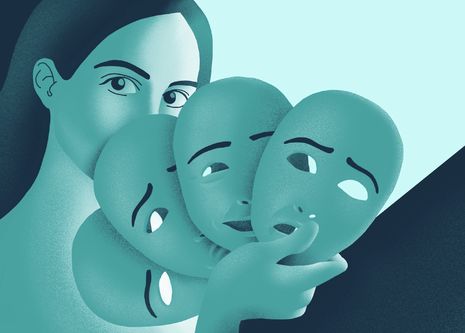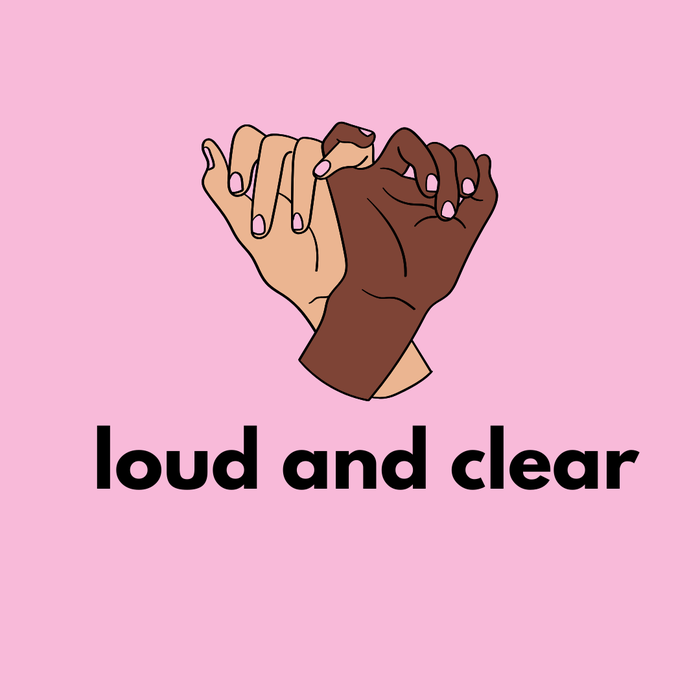The Many Faces of Trauma
“Most people would look at me and be surprised that I have PTSD”: Anna Trowby writes on the culturally perceived notion of the ‘right’ trauma survivor, and shares her own experience of processing abuse

Content Note: this article contains discussion of PTSD, sexual assault, abuse
What is a traumatised person?
Does a traumatised person have to look and act a certain way? Are they always haunted by overtures of their traumatic experience? Are they emotionally vulnerable? Yes and no.
Recently, I have become more aware of how sexual assault survivors are portrayed in the media, and how this one-note presentation often fails to do justice to the complexity of trauma. Meek and troubled depictions of sexual assault survivors, reduced to hollow versions of themselves, propagate a ‘right’ kind of trauma survivor that culturally embeds itself into our society. It is rarely considered that a person can respond to their trauma without being singularly reduced to it alone, or that they can continue to have a life beyond that trauma.
In all respects, I am a ‘normal’ girl. I lead a life made up of success and failure, and I am proud of it. Most people would look at me and be surprised that I have PTSD.
“It is rarely considered that a person can respond to their trauma without being singularly reduced to it alone”
Growing up, I was physically and emotionally abused by my mother. I was fortunate to have been put in a safe environment, away from her, but this abuse left marks on me that I am still unable to fully comprehend. As a child, I went from being happy and outgoing to sullen and quiet. Because of my actions and how they appeared externally to others, it was obvious that I was a troubled child. I was closer to our cultural idea of what a trauma survivor is than I am now, however the manifestation of that trauma can change as a person gets older. The things I struggled with as a child no longer affect me to the same degree. But as I became more aware of preconceived cultural notions of traumatised people, I struggled with being the ‘right’ kind of trauma survivor and I felt that these immature perceptions did no justice to its intimately subjective and complex experience. This transition from being the ‘right’ kind of trauma victim to the person I am now – the person who keeps their traumas hidden away from sight and is able to function fairly normally – was difficult and posed its own problems.
“Trauma is never constant. It is not singular.”
Most people would struggle to connect the person I am now to the vulnerable child that I was before, and I do not blame them. It is hard to reconcile my present self to the many versions of myself that went before. But, just as there are multiple parts of myself, there are multiple parts of trauma, which has expressed itself in a variety of ways. Trauma has many faces, which I have worn like masks throughout my life – sometimes only one at a time, but often, wearing several faces at once. It has taken a long time for me to realise that I was wearing these masks, and the ways in which they both obscured and amplified the pain I felt. I often put on a mask of serenity when dealing with particularly stressful situations that often slips to reveal someone manically struggling beneath the surface. It isn’t necessarily that I don’t feel calm in that moment but that it often sits alongside a bubbling tension. The faces I wore were truthful to how I felt, whilst simultaneously presenting to people an exterior that they did not expect to see from a traumatised person.
Because of a shallow cultural understanding of what trauma is, people have poorly conceived ideas of the type of people who suffer from PTSD. It is rare to find depictions of three-dimensional PTSD survivors with a life outside of their trauma, so it is no wonder that people struggle to humanise them. In this climate, it is easy to assume that there is a certain way to experience and process trauma. This understanding might be true for some people’s experiences, as it was for me once, but I find that this singular understanding of trauma overlooks its other manifestations. Trauma is never constant. It is not singular. Even in my own experience of trauma, I have found it to be an evolving and multi-faceted thing.
“Even in my own experience of trauma, I have found it to be an evolving and multi-faceted thing.”
It’s important then to recommend a TV show that challenges our ideas of the typical trauma survivor: the bold and brilliant ‘I May Destroy You’. Its narrative revolves around a woman processing her trauma in a variety of ways, whilst facing important life experiences that are unrelated to that trauma. Michaela Coel’s Arabella is both defiant, vulnerable, frustrated and confused about her assault. The way this trauma is manifested speaks more to the complexity of this phenomenon than any other depiction of trauma I have seen.
I can resonate with the show’s presentation of how processing trauma is assorted and confusing, and yet how it is only one part of someone’s daily life. I am still affected by PTSD and I still struggle with certain things because of my past experiences. However, PTSD doesn’t define my life. I am glad that it is not what people think of when they see me, even if it is frustrating dealing with people who make assumptions about my past. It may seem strange that I have such a normal life for someone with this kind of mental illness, but it is also not that unusual, considering that people respond to trauma in their own individual ways. There was a time when I was the ‘right’ kind of survivor, the kind that you could tell was troubled just from interacting with me. I am not ashamed of that person. But I have also been able to move on from my past in a way that surprised, even scared, me.
I don’t feel the pain that I did as a child, not because I am malicious, but because pain ebbs away without me even being aware of it. Straddling this boundary between normality and trauma has always been and will continue to be a strange journey. But in the meantime, we can do better to appreciate the complexity and variety of traumatised individuals.
If you are affected by any of the issues raised in this article, the following organisations provide support and resources:
- National Society for the Prevention of Cruelty to Children: a charity seeking to protect children against child abuse.
- Refuge: a charity seeking to protect women and children against domestic abuse, who provide a freephone 24-hour national domestic abuse helpline
- Breaking the Silence: the University’s campaign against harassment and sexual misconduct (includes reporting mechanisms).
- Sexual Assault and Harassment Adviser: specialist University support worker who provides emotional and practical support
- Cambridge Rape Crisis Centre: a charity for female victims of sexual violence.
- Cambridge Nightline: a confidential night-time listening service.
- Students’ Unions’ Advice Service: the Students’ Unions’ confidential, independent and impartial advice service
 News / SU reluctantly registers controversial women’s soc18 December 2025
News / SU reluctantly registers controversial women’s soc18 December 2025 Features / Should I stay or should I go? Cambridge students and alumni reflect on how their memories stay with them15 December 2025
Features / Should I stay or should I go? Cambridge students and alumni reflect on how their memories stay with them15 December 2025 News / Dons warn PM about Vet School closure16 December 2025
News / Dons warn PM about Vet School closure16 December 2025 News / Cambridge study finds students learn better with notes than AI13 December 2025
News / Cambridge study finds students learn better with notes than AI13 December 2025 News / Uni registers controversial new women’s society28 November 2025
News / Uni registers controversial new women’s society28 November 2025










